Race Heating Up in Transat Jacques Vabre
Published on November 11th, 2017
(November 11, 2017; Day 7) – The reverberations from a tough first week for the teams in this 13th edition of the Transat Jacques Vabre continued with another duo abandoning and two more making pit stops. But after six days of “living like animals” as Servane Escoffier (Bureau Vallée 2) said, more specifically living like fish, so deluged by water have the skippers been at times, there was some relief today. As the temperatures rose and the sea flattened, the skippers were able to get out of their dry suits and fleeces, eat normally, and catch up on some DIY and sleep.
Estimated first arrivals (UTC)
Ultime: Monday, November 13, end of the afternoon
Multi50: Thursday, November 16th
Imoca: Friday, 17 November
Class40: TBC
Early this afternoon, the Class40 Carac (Louis Duc and Alexis Loison) informed the race office that they would be abandoning. The duo arrived in Funchal (Madeira) last night after diverting because of serious knee injury to Duc. Duc is currently being treated at the hospital of Funchal and should be able to return to France in a few days with Loison.
“This is a huge disappointment,” Duc, who finished third in 2015, said. “We had worked hard to be ready for this transat and had high hopes on this first big race (for the new Carac), but it give us experience to come back better. It may be necessary to think about adding some padding on the boat…I want to thank Alexis who had to cope with this and did it very well.”
The newly-launched Carac, with its distinctive and powerful bow, had been one of the main challengers to Britain’s Phil Sharp and Spain’s Pablo Santurde (Imerys Clean Energy), who have held the lead after taking it on Tuesday late afternoon.
Pit stops
Enel Green Power (Class40): The Italians, Andrea Fantini and Alberto Bona arrived at 02:00 in Cascais (Lisbon) to repair their starboard rudder and a hole in the stern.
Ciela Village (Multi50): Thierry Bouchard and Oliver Krauss will make a stopover in the port of Mindelo in Cape Verde tomorrow morning to fix multiple technical problems: No antenna, no autopilot, port helm seat torn off and a crack in the hull level with the gennaker tack point.
Ultime
Doldrums? What Doldrums? Rather than being swallowed by dreaded Intertropical Convergence Zone, the two giant trimarans at the head of the race, ate them up in one bite. Jumping from one squall to the next they passed through last night and this morning in a matter of hours, were soon into 12-15-knot south-easterly tradewinds. They now at 18:00 have just over 1,000 miles of drag racing in what will build to 15-20 knots to the finish. Maxi Edmond de Rothschild closed but Sodebo Ultim’ still held a 10-mile lead.
Multi50
“50 miles in a Multi50, it’s nothing, it doesn’t worry us,” Lalou Roucayrol on Arkema said at noon. But by the evening they were 100 miles behind the favourties, FenêtréA – Mix Buffet, whose westerly strategy paid out and they are extending away in better breeze as they emerge from the disturbed area north-west of Cape Verde. They could pass the Doldrums – which looks like being not very active for another 72 hours – in about 30 hours time.
Imoca
In lighter airs further east of the stormy depression than the Multi50 around them, St Michel-Virbac’s lead has been shortened a touch. AT 18:00 they were 40 miles ahead of SMA, continuing to astonish in a boat without foils. And watch out for Des Voiles et Vous! who have found extra pressure further east. Between them, Britain’s Sam Davies with Tanguy de Lamotte on Initiatives-Cœur remain right in the chasing pack in 7th, 140 miles behind. Which way will they go?
SMA are clear about that. “We’re really happy because the forecast was maybe more for the foilers than the boats with daggerboards,” Paul Meilhat, the skipper of SMA said. “We’ve pushed the boat for the last three days. The problem is that Virbac-St Michel, the guys are good and their boat is faster. But we’re looking forward more than behind us. I think the weather conditions are going to be better for us until the Doldrums. I think we’re cross the Doldrums in 3-4 days. St Michel-Virbac have the best position, we need to be more to the west.”
Class40
Imerys Clean Energy have held their 11-mile lead steady over the new 24-hour record holders, V and B all day. Tellingly, they have extended away from Aïna Enfance et Avenir and TeamWork, who are now 30 and 60 miles behind respectively.
The area of weak winds that slowed the classes ahead of them (St Michel-Virbac, a 60ft monohull is only about 400 miles further down the track) is shifting west and will therefore open the door to a stable trade wind. The conditions are clearly improving, especially the state of the sea. They could have nice smooth schuss to the Doldrums.
Class40
1 – Imerys Clean Energy
2 – V and B
3 – Aïna Enfance & Avenir
Multi50
1 – FenêtréA – Mix Buffet
2 – Arkema
3 – Réauté Chocolat
Imoca
1 – St Michel – Virbac
2 – SMA
3 – “DES VOILES ET VOUS!”
Ultim
1 – Sodebo Ultim’
2 – Maxi Edmond de Rothschild
3 – Prince de Bretagne
Quotes from the Sailors
Louis Duc, skipper, Carac (Class40)
This is a huge disappointment. We had worked hard to be ready for this transat and had high hopes on this first big race (for the new Carac), but it give us experience to come back better. It may be necessary to think about adding some padding on the boat. In any case, I want to thank Alexis who had to cope with this and did it very well.
It was really extremely frustrating to be unable to manoeuvre, not be able to make the right sail changes. You have to be able to go fast, be efficient and stay safe on a boat and that was impossible for me, it was very annoying and harsh blow. Alexis took a lot on himself. He sailed well, his strategy in the rocks early in the course was perfect, and he taught me a lot.
The boat has managed to show its potential, it is faster than the others at certain angles, I’ve found positive things, and things to improve as well. The level of the Class40 is very high, you have to be performing at 200% to be able to fight for the lead. This is all the more motivating for the future, I will continue to prepare myself for the next season and of course the Route du Rhum.
Paul Meilhat, skipper, SMA (Imoca)
We’re really happy because the forecast was maybe more for the foilers than the boats with daggerboards, but we’ve pushed the boat for the last three days, with some quite good change of sails and I think the training during the year with Gwéno (Gahinet) was excellent, so we can manage the boat in lighter conditions well. The problem is that St Michel-Virbac, the guys are good and their boat is faster. So, they’re quite far away in front of us.
We’re looking forward more than behind us. I think the weather conditions are going to be better for us until the Doldrums. I think we’re cross the Doldrums in 3-4 days, and I think it’s more light wind and more about VMG, but we know that after the Doldrums it’s a long way to Salvador and it’s more reaching conditions, so we need to be in front at the end of the Doldrums if we want to have a hope of winning.
Last night was really difficult with a lot of wind changes and light. But it’s been better since this morning and the boat is faster and faster. I think St Michel-Virbac have the best position, we need to be more to the west, so maybe tomorrow we’re going to have a shift of the wind northeast – it’s more easterly at the moment, and maybe we’ll gybe to invest in the west. I think we’re going to cross the Doldrums more to the west than normal.
Thierry Bouchard, skipper, Ciela Village (Multi50)
We really wanted to do this Transat Jacques Vabre, even though it was a huge challenge for us. We knew at the beginning that all the facilities on board were not reliable, but we’re really happy to be here today. The idea is to stop for as short a time as possible in Mindelo and to leave 100%. The boat started to make big swerves. It became uncontrollable with the autopilot. So, since Tuesday, we’ve been helming 24 hours a day. It’s very difficult to wake each other up when you have to manoeuvre on the deck but not let go of the helm for a moment.
We can’t adjust the boat or manoeuvre when we’re alone, especially since the boat is super responsive and the conditions have been pretty fierce from the start with a lot of big seas. [Bouchard and Oliver Krauss finished 2nd on the last Transat Jacques Vabre on board Drekan Groupe, the boat which capsized on Wednesday night]. They are not the same boats. Our new one is much more responsive, more powerful. We have to learn how to use it and we need all the tools to be able to attack and to be able to make it reliable.
Race details – Entry list – Tracker – Facebook
13th edition of the Transat Jacques Vabre
• Biennial doublehanded race now 24 years old
• Two founding partners: the city of Le Havre and brand Jacques Vabre
• Four classes on the starting line: Class40, IMOCA, Multi50, and Ultimate
• Starting November 5 in Le Havre (FRA) for the 4350nm course to Salvador de Bahia (BRA)
n 2013, and again in 2015, all the boats flew past Salvador de Bahia, sails filled by the trade winds of the south-east, under the tropical sun…One imagines that they dreamt of finally finishing their race in All Saints’ Bay. In 2017, it will be a reality!
After the start line and a coastal route as far as Etretat, the duos will head towards Brittany to get out of the Channel as quickly as possible, where the currents are powerful, cargo traffic dangerous, and a lot of attention is needed.
They will then enter the Bay of Biscay, where, depending on the position of the Azores anticyclone, they will either find downwind conditions, easy and fast, like for the last Vendée Globe, or tougher and slower conditions in the passage of some late autumn depressions.
Four hundred miles later, having passed Cape Finisterre, the northern Portuguese trade winds should propel them quickly towards Madeira, and then the Canary Islands, where awaiting them will be northeast trade winds, which could be strong or weak.
Passing close to the Portuguese coast, or offshore, to the east or west of the Canary Islands and then the Cape Verde islands – you have to choose the right options. The next goal is to establish your position for the crossing of the dreaded Doldrums, located a few degrees north of the equator. At this time of year, it can change position very quickly, extend or contract, because even after carefully studying of the satellite images, sudden squalls can develop and stall the competitors under a good shower without wind for hours.
This passage is crucial in the Transat Jacques Vabre racecourse. Further west… Further east… After the calms, rainy squalls, with too much or no wind… The final goal is to get out well-positioned enough to benefit first from the southeast trade winds and to cover the remaining 850 miles towards the finish,passing along the islands of Fernando de Noronha, along the coast of Brazil and finally heading northwest into the magnificent All Saints’ Bay.
This transoceanic racecourse from North to South is more demanding than a transat from East to West; it requires the skippers to have sharp tactical and strategic qualities, good weather training, to be in excellent physical condition to maintain a sustained speed in the trade winds… And to have a lot of patience to cross the equator.
Source: Transat Jacques Vabre


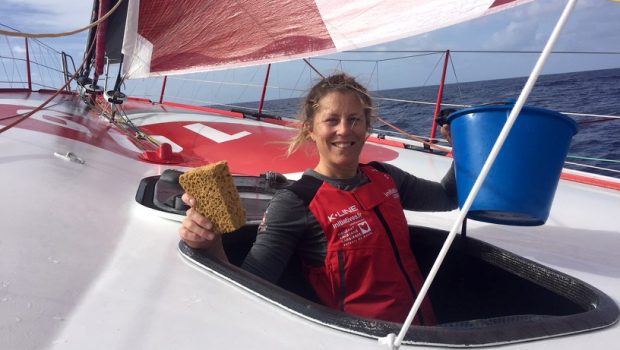
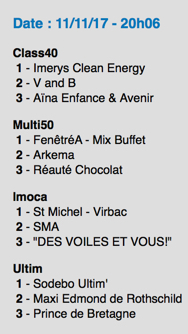

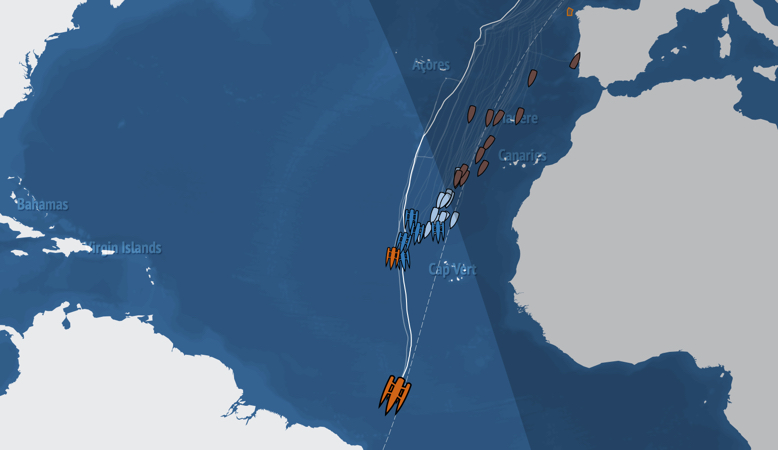
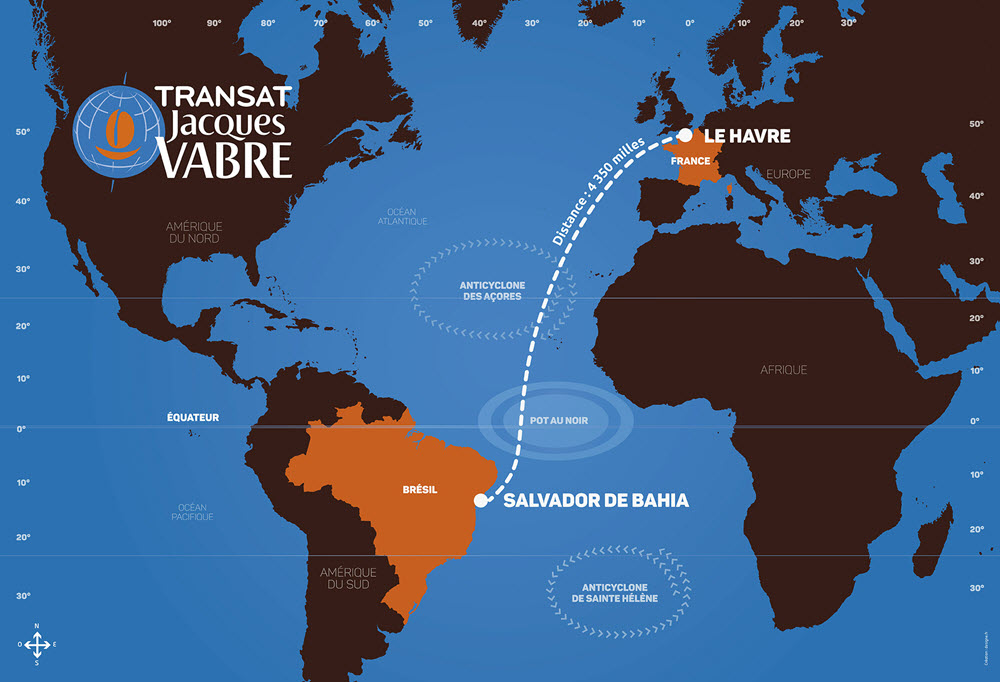

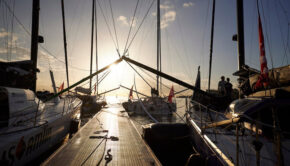
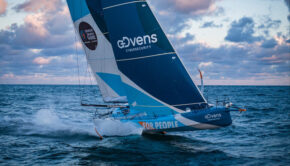
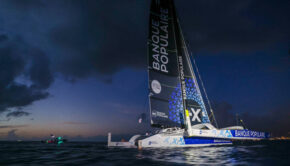
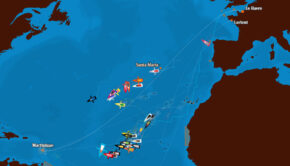
 We’ll keep your information safe.
We’ll keep your information safe.